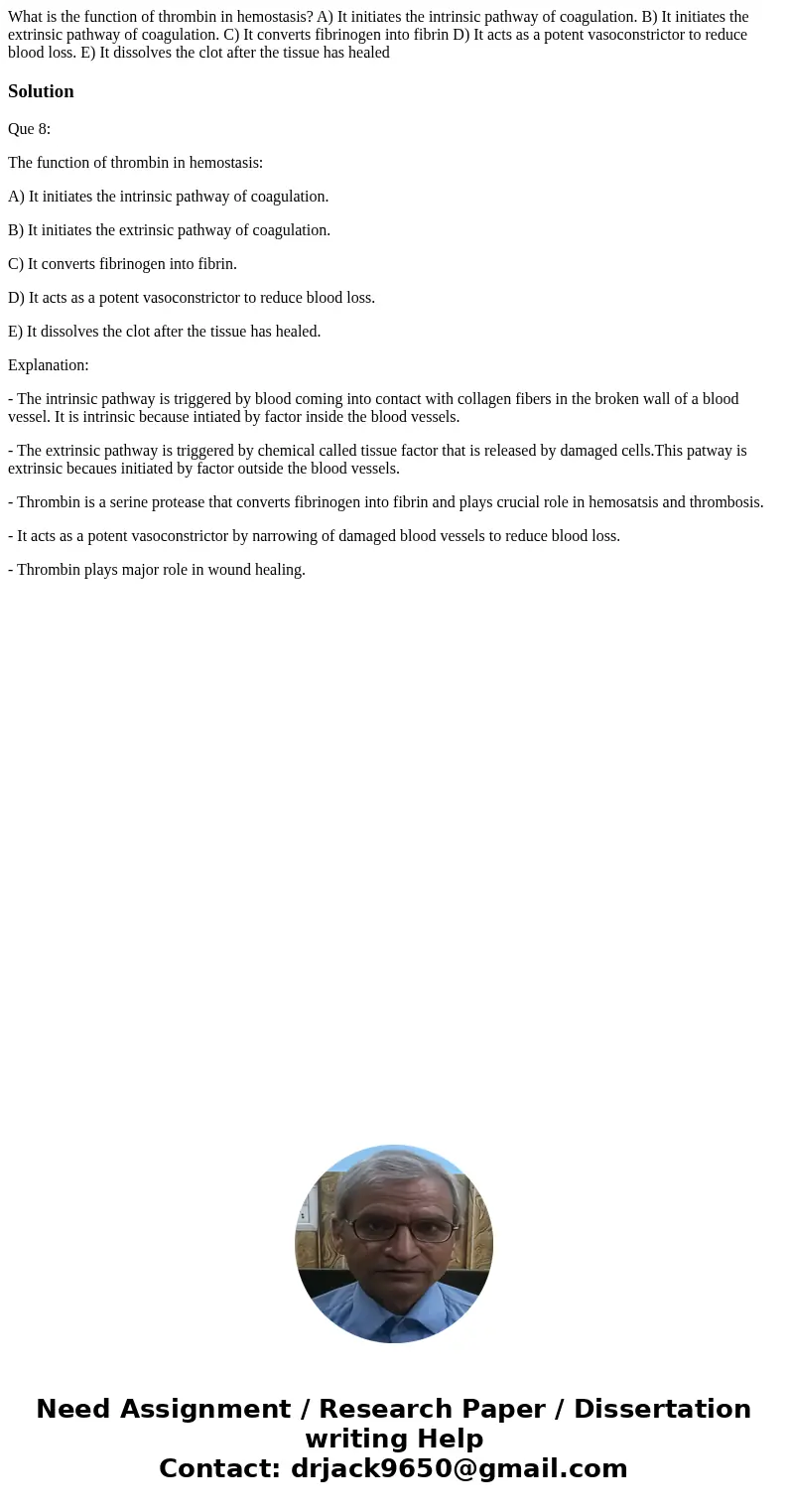What is the function of thrombin in hemostasis A It initiate
Solution
Que 8:
The function of thrombin in hemostasis:
A) It initiates the intrinsic pathway of coagulation.
B) It initiates the extrinsic pathway of coagulation.
C) It converts fibrinogen into fibrin.
D) It acts as a potent vasoconstrictor to reduce blood loss.
E) It dissolves the clot after the tissue has healed.
Explanation:
- The intrinsic pathway is triggered by blood coming into contact with collagen fibers in the broken wall of a blood vessel. It is intrinsic because intiated by factor inside the blood vessels.
- The extrinsic pathway is triggered by chemical called tissue factor that is released by damaged cells.This patway is extrinsic becaues initiated by factor outside the blood vessels.
- Thrombin is a serine protease that converts fibrinogen into fibrin and plays crucial role in hemosatsis and thrombosis.
- It acts as a potent vasoconstrictor by narrowing of damaged blood vessels to reduce blood loss.
- Thrombin plays major role in wound healing.

 Homework Sourse
Homework Sourse